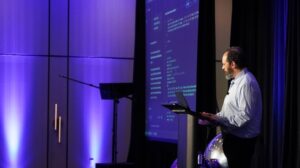The global healthcare system is facing a critical staffing crisis, with nurse shortages reaching alarming levels. In the U.S., 100,000 registered nurses left the workforce during the pandemic, and over 600,000 more plan to leave by 2027 due to stress, burnout, and retirement1. To compound matters, the International Council of Nurses projects a global shortfall of 13 million nurses by 2030.2 The shortage extends beyond nursing to physicians and allied health professionals, leaving healthcare systems struggling to meet rising patient demands.
Despite efforts like expanding nursing programs and international traveler initiatives, demand continues to outpace supply—a 2024 report by the Association of American Medical Colleges projects a shortfall of 86,000 workers by 20363. This widening gap forces hospitals into constant resource reallocation, complicating efforts to match staff skills with shifting patient needs. Traditional staffing models, reliant on historical data and manual processes, tend to fall short in today’s fast-paced environment.
Hospitals now need real-time, predictive tools to forecast staffing gaps and optimize resources proactively. AI-powered solutions, like GE HealthCare’s Command Center, are helping address this challenge by transforming complex data into actionable insights, enabling healthcare leaders to shift from reactive staffing to proactive planning—with an aim of ensuring the right staff are in the right place at the right time.
Sophisticated machine learning models power the AI behind Command Center’s Census and Staffing Forecast to help hospitals predict bed occupancy and resource needs. The machine learning models learn patterns related to seasonality trends from historical census data, and combine them with real-time hospital data to generate accurate forecasts.
Many of the hospitals utilizing Command Center around the world have reported benefits from reduced wait times, improved bed management, and increased staff productivity. To give just one example, Duke Health achieved 95% accuracy in predicting staffing needs up to 14 days in advance, and a 50% reduction in temporary labor requirements with GE HealthCare Command Center4.
In this article, I will explain the machine learning techniques behind these solutions, including benefits like improved hospital-wide awareness, enhanced collaboration, better resource planning, reduced operational costs, and positive impacts on patient care.

Census forecast and staffing
Command Center’s census forecast system is crafted to deliver forecasts for individual hospital units, groups of units, entire hospitals, or even networks of multiple hospitals. The staffing solution, built upon this census forecasting module, uses mathematical models and organizational staffing rules to convert the predicted census into precise staffing demand estimates. These predictions include hourly forecasts for the next 48 hours, and daily forecasts for the next 14 days, broken into weekly time slots that are often configured based on the peak traffic periods of the hospital.
Census, in this context, refers to the number of hospital beds occupied by patients in a specific area, whether it’s a single unit, several units, or the whole facility. Accurate census forecasting enables hospitals to optimize for unforeseen demand fluctuations by allocating staff and resources efficiently, minimizing patient flow bottlenecks, and reducing overall operational costs.
However, this is easier said than done.
Hospitals function as dynamic systems with numerous interconnected departments, making it difficult to predict patient flow and resource needs. Hospital systems are rapidly evolving with constant patient influx and transfers between inpatient wards, perioperative rooms, post-anesthesia care units, emergency rooms, diagnostic labs, and other zones. Organizational pathways for patient transfers and hand-off protocols further impact patient flow patterns and staffing demand in hospitals.
Forecasting hospital census is especially challenging also due to the variability in patient arrival and recovery times, resulting in lengths of stay that are difficult to predict. Factors such as diagnosis, treatment plan, and recovery progression significantly influence a patient’s hospitalization duration. Real-time decisions, such as scheduling add-on surgeries, blocking beds due to staffing shortages, patient no-shows, or hospital-wide emergencies, can impact future census and staffing needs across different hospital zones. Machine learning models can help solve these problems by analyzing past data, identifying causal variables, recognizing seasonal patterns, and guiding decisions to enhance hospital operations and patient care.
Adapting to these ever-changing conditions demands continuous data analysis, precise predictions of future states, and the delivery of optimal forecasts to maximize capacity and enhance the quality of care.
Data setup for census forecasting models and the influence of co-variates
Developing an accurate census forecasting model requires collecting and aggregating high-quality data elements. The accuracy and reliability of these models depend heavily on data quality. Poor-quality data can lead to misleading predictions, operational inefficiencies, and flawed decision-making. Incomplete or irregular data adds noise, complicating predictions. Therefore, additional data monitoring systems and data quality safeguards are necessary to ensure data completeness, accuracy, consistency, timeliness, and granularity.
To forecast census with greater accuracy, we collect, transform, and aggregate data from multiple sources, including Electronic Health Records (EHR), health information systems, and other hospital web services. Command Center’s data ingestion tools record current and historical data on patient movements, admissions, discharges, demographics, admission sources, diagnoses, unit census, surgery schedules, organizational policies, and workflows, amongst others, into an analytical data warehouse. This warehouse is leveraged to train our different forecasting models.
Data pipelines from the analytical data warehouse supply accurate data for forecasting models to generate high-volume forecasts at speed. These pipelines include “cleaning” tools to address data gaps with appropriate fillers, remove noise, and eliminate statistical outliers. After cleaning, data undergoes further preprocessing through statistical transformations before being used to train machine learning-based forecasting models.
Command Center’s census forecasting algorithms are trained on multiple relevant factors, known as covariates, in addition to historical census data. This approach differentiates our solution from other commercial models that primarily rely on historical census data, enabling us to predict extreme surges or drops in census more accurately. Models without appropriate covariates suffer from limited context availability, reduced flexibility, overfitting, and poor predictive accuracy.
Advanced machine learning approaches for accurate census estimation
The machine learning model behind Command Center’s census forecasting and staffing is built for stability—handling complex patterns and long-term trends. It improves census estimates by balancing real-world factors like scheduled surgeries, admissions, discharges, and transfers with historical occupancy data. Multiple models, trained on different time periods, work together as an ensemble, where the most accurate models contribute more to the final forecast to generate more accurate census forecasts over different time horizons.
To make these predictions reliable, the system uses techniques like random forests and gradient-boosted trees, which are advanced machine learning methods designed to learn patterns from copious amounts of complex, and sometimes noisy, data.
A random forest is a collection of many decision trees, where each tree makes its own prediction, and the final result is based on the majority vote or the average of all the trees. This helps avoid errors that could occur if a single model relied too much on a specific pattern in historical data. In a hospital setting, this means that instead of making census forecasts based on just one past trend or a singular variable, the system considers multiple perspectives, ensuring a more balanced and adaptable approach.
Gradient-boosted trees work differently by training models sequentially, where each new tree learns from the mistakes of the previous ones. This gradual improvement makes the predictions more accurate over multiple training iterations.
In a hospital environment, this means the model continuously refines its ability to predict patient flow, learning from past inaccuracies to better anticipate surges in emergency admissions or inpatient unit census.
By using these methods, the system avoids overfitting, which happens when a model learns too much from past data and fails to generalize well to new conditions. For example, if a hospital relied on outdated seasonal trends without adapting to real-time events, like a sudden flu outbreak, it might be caught off guard by unexpected patient inflows. The machine learning model prevents this by recognizing both long-term trends and recent changes, helping to ensure hospitals can efficiently allocate staff, manage bed capacity, and improve overall patient care.
Next-level predictions with transformers
Transformers, originally designed for natural language processing, are now being used to improve forecasting in healthcare. One such model, Autoformer, analyzes hospital data over time by breaking it down into repeating cycles and broader trends, helping healthcare providers anticipate changes in patient volume.
Autoformer uses autocorrelation, a technique that identifies recurring patterns in data. In a hospital setting, this means recognizing that patient admissions tend to rise during flu season, drop on weekends, or spike after holidays. By detecting these repeating trends, the model helps administrators prepare in advance by adjusting staffing, managing bed availability, and ensuring critical supplies are stocked.
Another key feature of Autoformer is its decomposition process, which separates long-term trends from short-term fluctuations. This means the model can distinguish between an overall increase in patient volumes due to an aging population, and temporary surges caused by events like local disease outbreaks. For hospital operations, this enables more precise planning, reducing overcrowding, and allocating resources efficiently.
By combining traditional forecasting methods with advanced attention mechanisms, Autoformer captures both broad seasonal trends and daily variations in patient inflows. This can allow hospitals to make data-driven decisions, improving efficiency, reducing wait times, and ultimately enhancing patient outcomes.
Forecasting process and the role of bias correction
The predictions from our forecasting models are monitored for systematic errors, or bias. If the census forecasting algorithm consistently over-forecasts or under-forecasts the actual census over a wide time horizon, we correct the observed bias to ensure the forecasts remain reliable and actionable.
By continuously comparing predictions to actual outcomes, the model improves over time, enabling hospitals to plan staffing, bed management, and resource allocation with confidence.
Forecasts cover different timeframes: 48-hour hourly predictions help manage immediate staffing, while 14-day forecasts support scheduling and inventory planning. Unlike models based on first principles, which rely on fixed rules, machine learning adapts to real-world demand shifts, including surges.
By replacing guesswork with data-driven planning, machine learning stands to improve hospital operations. Machine learning models dynamically adjust to holidays, public events, and sudden patient influxes, ensuring smooth patient care transitions. The result is clear census visibility, early detection of bottlenecks, and optimized resource allocation, leading to more efficient operations and enhanced quality of patient care.
As a data scientist with years of experience in healthcare and beyond, I have seen many cutting-edge machine learning innovations. But what sets Command Center apart is not just its advanced algorithms—it is the deep institutional knowledge that shapes them. For 125 years, GE HealthCare has been at the forefront of medical innovation, trusted by care providers to push the boundaries of what is possible. Working alongside these professionals, I see firsthand how their deep understanding of hospital operations—what happens minute by minute, day after day—drives Command Center’s impact. This expertise ensures that our technology is not just intelligent, but truly aligned with the realities and needs of healthcare providers.
- https://www.nursingworld.org/practice-policy/workforce/ ↩︎
- https://www.icn.ch/news/new-report-calls-global-action-plan-address-nursing-workforce-crisis-and-prevent-avoidable ↩︎
- https://www.icn.ch/news/new-report-calls-global-action-plan-address-nursing-workforce-crisis-and-prevent-avoidable ↩︎
- https://investor.gehealthcare.com/news-releases/news-release-details/ge-healthcare-announces-major-academic-medical-center-first ↩︎


